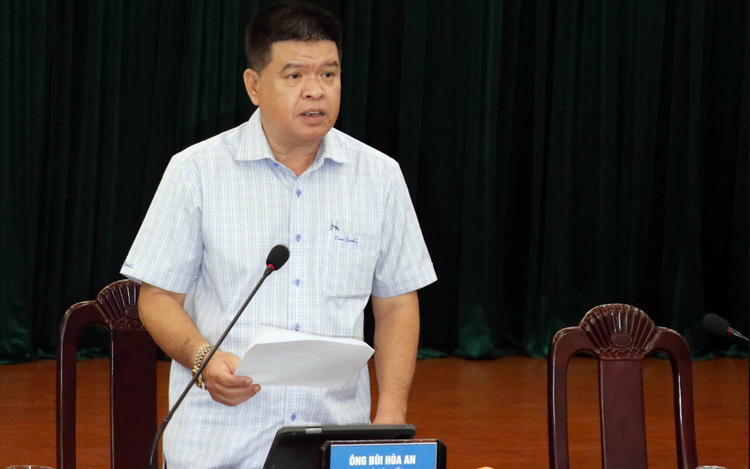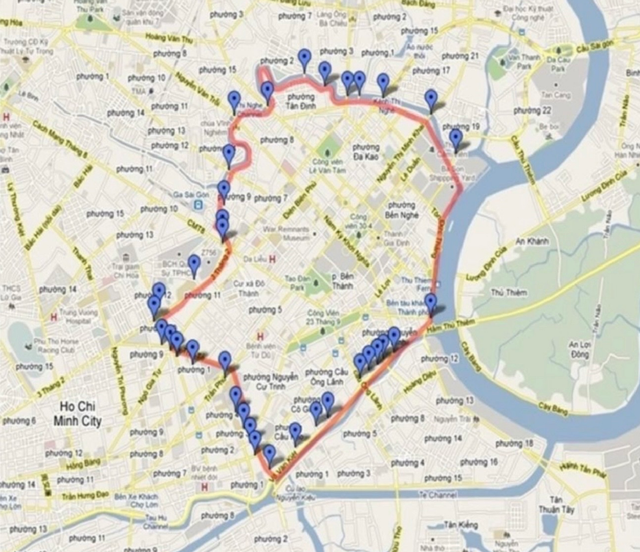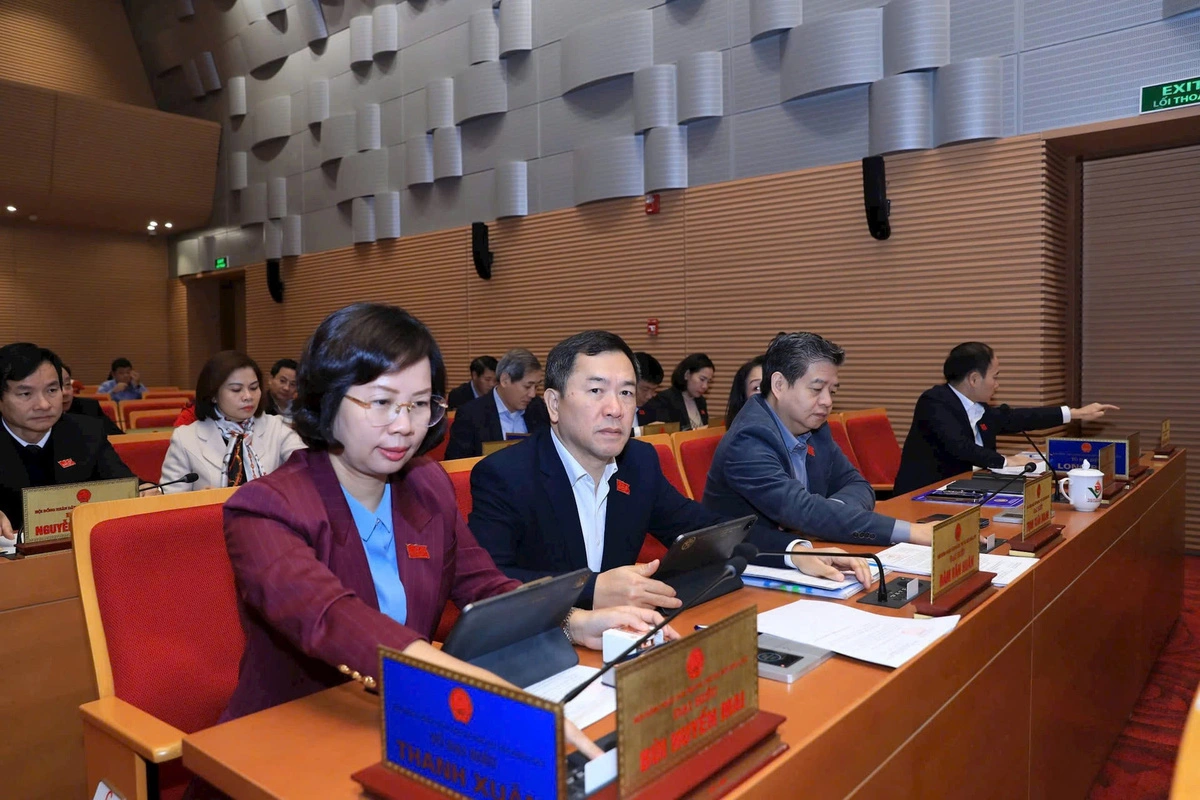
Bui Hoa An, deputy head of the Ho Chi Minh City Department of Construction. Photo: Thu Dung / Tuoi Tre
The initiative is part of the city’s broader strategy to combat air pollution and promote green transportation.
At a workshop held on Tuesday by the municipal Department of Construction, officials and experts presented the findings of a study on low emission zones and outlined a roadmap for implementation.
According to the consulting team, after the old Ho Chi Minh City was merged with the former Ba Ria-Vung Tau and Binh Duong Provinces on July 1, the new city with a population of 14 million is under significant environmental pressure from transportation-related pollution.
The city currently has over one million cars and 7.3 million motorcycles in circulation, contributing to 88 percent of nitrogen oxide, 99 percent of carbon monoxide, 79 percent of sulfur dioxide, and 88 percent of particulate matter (PM) emissions.
Average PM2.5 levels in the city are recorded at 31 µg/m³, six times higher than the World Health Organization’s recommended limit.
This level of pollution may result in economic losses estimated at over VND3 trillion (US$114 million) annually, equivalent to 0.25 percent of the city’s GRDP.
Alarmingly, the number of air pollution-related deaths now surpasses those caused by traffic accidents each year.
To address the crisis, the consulting team proposed establishing low emission zones in downtown Ho Chi Minh City, bounded by 15 bridges and 20 major streets, and along Rung Sac Road in the Can Gio area.
Starting in 2026, the city plans to restrict or ban the entry of high-emission vehicles into these zones.
These include trucks, which account for roughly 40 percent of transport-related emissions, motorcycles that fail to meet Euro 2 emission standards, and cars that do not meet Euro 4 standards.
Conversely, eco-friendly vehicles and priority vehicles such as public services, will be permitted.
During the same period, the city will try limiting substandard vehicles along Rung Sac Road, between Binh Khanh Ferry and Duyen Hai Road.
Expanded roadmap through 2032
Between 2027 and 2030, the city will conduct mass emission testing for motorcycles and progressively restrict non-compliant vehicles from entering central areas.
The low emission zone boundaries will then expand to include Binh Khanh, An Thoi Dong, Can Gio, and Thanh An Communes.
By 2031, the zones will extend to the entire Ring Road 1 area, encompassing major roads such as Pham Van Dong, Nguyen Thai Son Roundabout, Bay Hien Intersection, Huong Lo 2, and Nguyen Van Linh.
In 2032, stricter emission standards will be enforced for all vehicles entering these zones.
To manage access and enforcement, the consulting team proposed the Ministry of Construction include ‘Low Emission Zone’ signage in national traffic regulations.
Dedicated ‘Low Emission Zone’ signs and road markings will be placed at entry and exit points to inform drivers.
The proposal also includes the installation of 58 automatic number plate recognition cameras in the central area and nine along Rung Sac Road to monitor and record vehicles violating emission standards.

A map shows a proposed low emission zone in downtown Ho Chi Minh City. Photo: Ho Chi Minh City Department of Construction
Support for green transition
The transition to greener transportation is based on three pillars: electrification of vehicles, establishment of low emission zones, and supportive infrastructure and policy, according to the consulting team.
The city will prioritize the conversion of high emission, easily managed vehicles such as buses, taxis, vehicles used for ride-hailing services, and trucks to electric or clean energy alternatives.
Financial support and preferential tax policies will accompany this shift, alongside the development of infrastructure and public awareness campaigns.
Under the plan, by 2030, 78 new bus routes using clean fuel, totaling some 2,850 buses, will be launched, with integrated connections to public bicycle and electric scooter systems.
Beyond 2030, the city will promote broader adoption of electric vehicles by individuals, organizations, and businesses.
However, the high cost of conversion remains a challenge, especially for low-income earners and companies with large fleets.
To address this, several incentives have been proposed, including 100-percent exemption from registration fees for electric vehicles used in transport services, a 50-percent reduction in road maintenance fees for electric cars, and a 50-percent cut in registration plate change fees for electric vehicles.
For households and individuals, direct financial support includes up to 10 percent of the cost with a maximum of VND5 million ($189.4) for purchasing new electric motorcycles, a 70-percent reimbursement of the remaining value for decommissioned motorcycles, and a 10-percent interest rate subsidy on loans for electric vehicle purchases.
Also, special support includes 100-percent conversion cost coverage for poor households, 80 percent for near-poor households, and 20 percent for other households.
Aiming for net-zero emissions by 2050
Speaking at the workshop, Bui Hoa An, deputy director of the municipal Department of Construction, emphasized that establishing low emission zones and transitioning to green transport are vital steps toward improving air quality and protecting public health.
He affirmed the city's commitment to achieving net-zero emissions by 2050.
“Based on these recommendations, we believe the initial focus should be on public service and ride-hailing vehicles," he said.
“Then, we must engage the wider public, including state agencies and residents."
He stressed that under Resolution 98, the city’s green transport transition must follow a ‘supportive, incentivizing, and preferential’ approach.
This includes encouraging voluntary adoption, offering incentives to low-income residents, and fully supporting poor households to ensure equity and minimize disruption.



Max: 1500 characters
There are no comments yet. Be the first to comment.